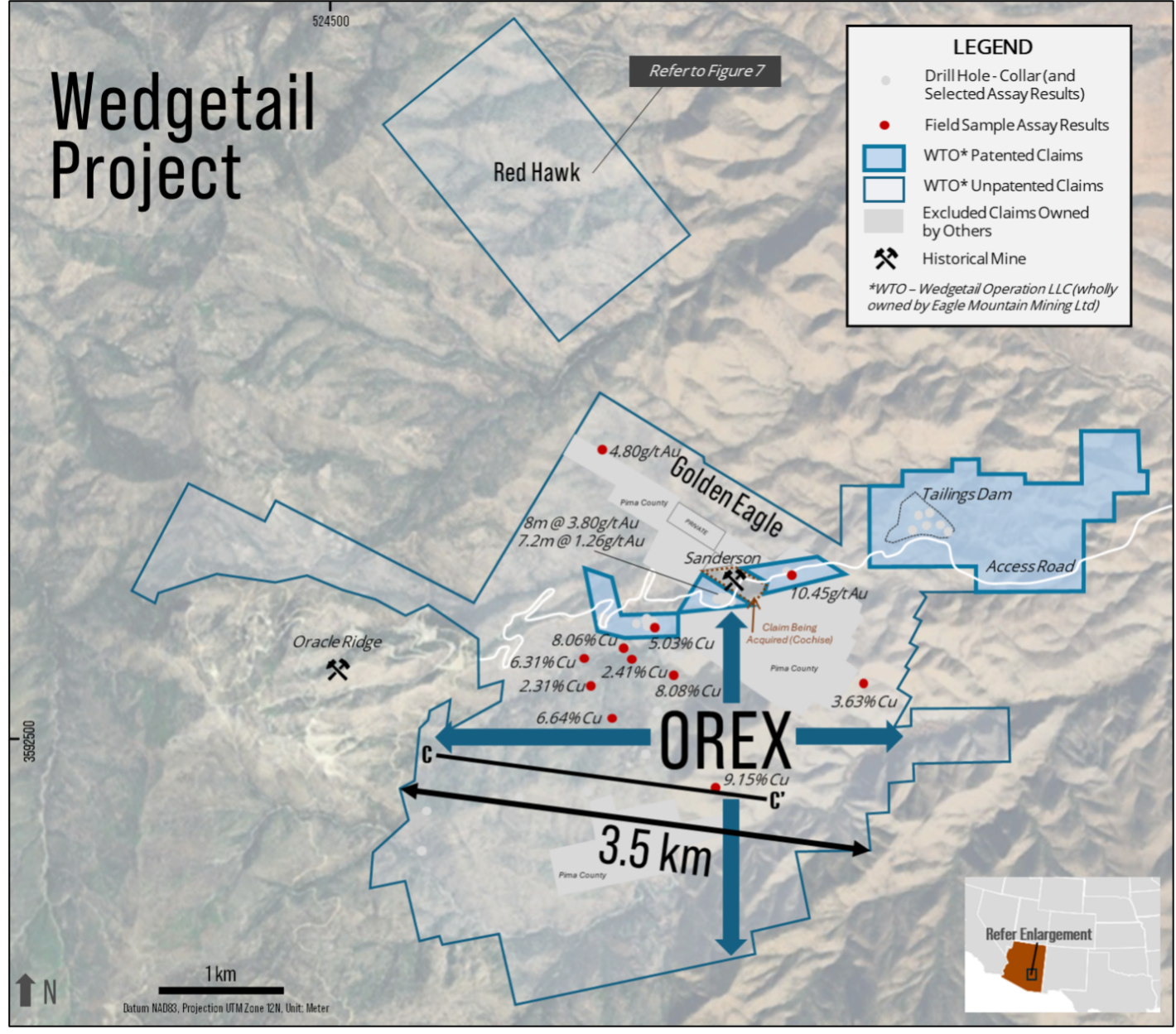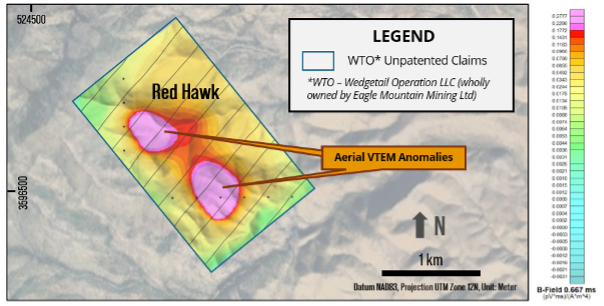Wedgetail Copper Project (100%)
Eagle Mountain Mining Limited (ASX:EM2) is a copper-gold explorer focused on the exploration and development of its Wedgetail and Silver Mountain Projects, both located in Arizona, USA.
Underpinned by solid foundations, Eagle Mountain has the projects, resources and expertise to build a sustainable copper mining Company.
Project Highlights
Tier 1 mining jurisdiction of Arizona, USA
Strong pipeline of quality drill targets aiming to increase Resources
High grade rock chip samples up to 9% Cu
8km2 target area
Project Location
The Wedgetail Project is located less than a two-hour drive from Tucson, Arizona and only a half-hour from the mining town of San Manuel. The nearby San Manuel copper mine was the world’s largest underground copper mine by the 1980’s and produced over 700 million tons of ore from underground alone.
The Arizona mining sector is well supported by world-class infrastructure and a highly skilled workforce. A rail line from the town of San Manuel leads north about 50 kms to a copper smelter.
The main copper minerals are bornite, chalcocite, and chalcopyrite, with very little copper occurring in oxide or silicate form. The deposit also contains elevated concentrations of silver and gold, which generally show close associations with copper and, in past operations, have reported to the concentrate. The mineralisation occurs in multiple forms, including fine disseminations, fracture and vein fill, and coarse blebs. The main gangue minerals are magnetite, pyroxene, serpentine, grossularite, dolomite, calcite, and quartz.
OREX Mineralisation
The OREX prospect is interpreted to be a copper dominated skarn system, based on geological similarities observed from nearby deposits. Sulphide mineralisation occurs within Carboniferous to Cambrian carbonate-rich sediments that have been intruded by late Cretaceous granodiorite sills and dykes. Grade tenor appears to be largely controlled by the proximity to the lower granodiorite contact and the composition of the sediments. Copper mineralisation has also been identified within the granodiorite, but it is largely limited to the contact zones.
Primary copper minerals are chalcopyrite and bornite, with very little copper occurring in oxide or silicate form. Mineralisation occurs in multiple forms, including fine disseminations, fracture and vein fill, and coarse blebs. The main gangue minerals are magnetite, pyroxene, serpentine, grossularite, dolomite, calcite, and quartz.

Conceptual section of OREX mineralisation, with selected field sample assay results along the lower contact of the Leatherwood intrusion.
The majority of mineralisation at OREX occurs within three limestone formations; Abrigo, Martin and Escabrosa. These same formations also host significant skarn deposits at other major porphyry mines in Arizona. Skarn alteration and copper mineralisation is believed to have formed during the Laramide, a geologic period when many major world class copper deposits such as Globe-Miami, Magma, Resolution, Ray and San Manuel-Kalamazoo were formed in Arizona and throughout the southwestern US.
Skarns are formed by an influx of hot fluids commonly sourced from a proximal heat source such as a porphyry intrusion. At OREX, it is believed that a similar source intrusion was likely responsible for altering the mineral composition of pre-existing limestone prior to depositing copper-bearing minerals. The location of a possible porphyry source to mineralisation at OREX is not known and locating this system remains a key exploration objective for the Company. A conceptual section of OREX is shown in the Figure above.
High-grade rock chip samples along the Leatherwood contact and surrounding area include:
- 9.15% Cu, 192g/t Ag, 0.15g/t Au
- 8.08% Cu, 30.9g/t Ag, 0.23g/t Au
- 8.06 % Cu, 39.1 g/t Ag
- 6.64 % Cu
- 6.31 % Cu, 0.45 g/t Au
Red Hawk Mineralisation
Field sampling and geophyics (VTEM) have taken place over Red Hawk, defining two anomalies of high electromagnetic responses.. These zones appear to be associated with iron-rich breccias, and based on early-stage field mapping and sampling demonstrate the potential for an IOCG, base metal sulphide or other hydrothermal systems. No drilling has occurred at Red Hawk.
Golden Eagle Mineralisation
Two distinct styles of mineralisation have been observed from initial exploration field work and drilling at the Golden Eagle prospect. An upper polymetallic zone elevated in disseminated and veined base metals (copper, lead, zinc) is hosted in granitic rocks, with pyrite, silica flooding, minor galena and sphalerite observed. Underneath the polymetallic system is an increasing zone of oxidation with extensive breccias, including gold mineralisation. The highest concentrations of gold have been associated with hematite rich fault zones proximal to a lithological contact between the granitic rocks and a younger intrusion.
Assays from drill holes intersecting the gold-rich zone included:
- 21.2m at 1.88g/t Au and 0.11% Cu from 236.8m (GE-21-03), including
- 8.0m at 3.80g/t Au and 0.20% Cu, and
- 7.2m at 1.26g/t Au and 0.09% Cu


